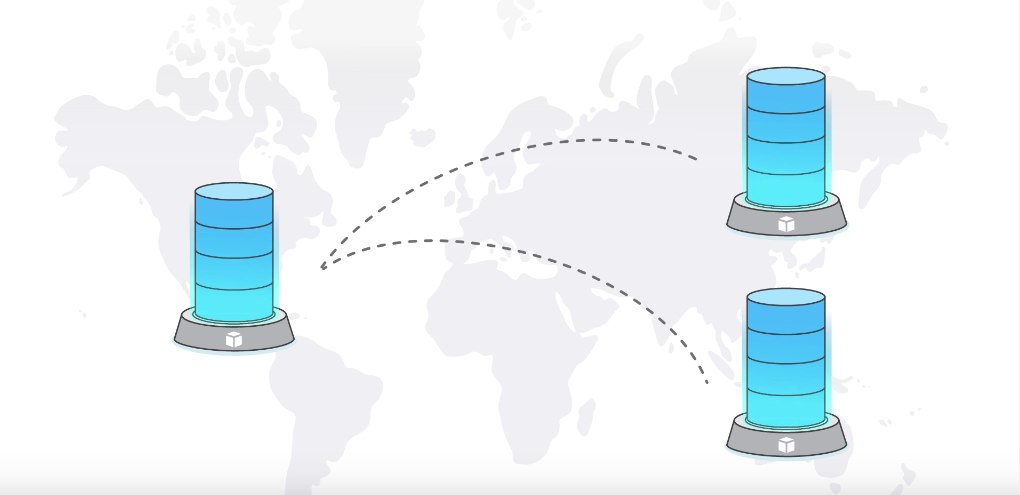AWS Database Migration Service helps you migrate databases to AWS easily and securely. The source database remains fully operational during the migration, minimizing downtime to applications that rely on the database. The AWS Database Migration Service can migrate your data to and from most widely used commercial and open-source databases.
The service supports homogenous migrations such as Oracle to Oracle, as well as heterogeneous migrations between different database platforms, such as Oracle to Amazon Aurora or Microsoft SQL Server to MySQL. It also allows you to stream data to Amazon Redshift from any of the supported sources including Amazon Aurora, PostgreSQL, MySQL, MariaDB, Oracle, SAP ASE and SQL Server, enabling consolidation and easy analysis of data in the petabyte-scale data warehouse. AWS Database Migration Service can also be used for continuous data replication with high-availability.
Adobe Flash Player or a modern browser is required to view videos on this site.


The AWS Schema Conversion Tool makes heterogeneous database migrations easy by automatically converting the source database schema and a majority of the custom code, including views, stored procedures, and functions, to a format compatible with the target database. Any code that cannot be automatically converted is clearly marked so that it can be manually converted. SCT can also scan your application source code for embedded SQL statements and convert them as part of a database schema conversion project. During this process, SCT performs cloud native code optimization by converting legacy Oracle and SQL Server functions to their equivalent AWS service thus helping you modernize the applications at the same time of database migration.
Your source database can be on-premises, or in Amazon RDS or EC2 and the target database can be in either Amazon RDS or EC2. The AWS Schema Conversion Tool supports the following conversions.
| Source Database | Target Database on Amazon RDS |
|---|---|
| Oracle | Amazon Aurora, MySQL, PostgreSQL, MariaDB |
| Oracle Data Warehouse | Amazon Redshift |
| Microsoft SQL Server | Amazon Aurora, MySQL, PostgreSQL, MariaDB |
| Teradata | Amazon Redshift |
| Netezza | Amazon Redshift |
| Greenplum | Amazon Redshift |
| MySQL and MariaDB | PostgreSQL |
| PostgreSQL | Amazon Aurora, MySQL, MariaDB |
| Amazon Aurora | PostgreSQL |
You can download AWS Schema Conversion Tool for your platform of choice from the links below

In homogeneous database migrations, the source and target database engines are the same or are compatible like Oracle to Amazon RDS for Oracle, MySQL to Amazon Aurora, MySQL to Amazon RDS for MySQL, or Microsoft SQL Server to Amazon RDS for SQL Server. Since the schema structure, data types, and database code are compatible between the source and target databases, this kind of migration is a one step process. You create a migration task with connections to the source and target databases, then start the migration with the click of a button. AWS Database Migration Service takes care of the rest. The source database can be located in your own premises outside of AWS, running on an Amazon EC2 instance, or it can be an Amazon RDS database. The target can be a database in Amazon EC2 or Amazon RDS.


Expedia, Inc. is one of the world’s leading travel companies, helping millions of travelers per month easily plan and book travel. “We are in the process of migrating some databases to Amazon Aurora,” said Kuldeep Chowhan, Principal Engineer, Expedia, Inc. “The ease by which we can do this using the AWS Database Migration Service has simplified this process for us and enabled us to accelerate our migration efforts. The ability to closely monitor the process, the detailed logging feature, and the support we received from AWS have given us a great deal of confidence in a successful migration.”
In heterogeneous database migrations the source and target databases engines are different, like in the case of Oracle to Amazon Aurora, Oracle to PostgreSQL, or Microsoft SQL Server to MySQL migrations. In this case, the schema structure, data types, and database code of source and target databases can be quite different, requiring a schema and code transformation before the data migration starts. That makes heterogeneous migrations a two step process. First use the AWS Schema Conversion Tool to convert the source schema and code to match that of the target database, and then use the AWS Database Migration Service to migrate data from the source database to the target database. All the required data type conversions will automatically be done by the AWS Database Migration Service during the migration. The source database can be located in your own premises outside of AWS, running on an Amazon EC2 instance, or it can be an Amazon RDS database. The target can be a database in Amazon EC2 or Amazon RDS.

Thomas Publishing is a 100 year old company that began publishing the Thomas Register of American Manufacturers in 1898. Thomas Publishing migrated their production database from Oracle to Amazon Aurora using the AWS Database Migration Service and Schema Conversion Tool. The entire migration process was completed in less than 4 weeks.
AWS Database Migration Service can be used to migrate data both into and out of the cloud for development purposes. There are two common scenarios. The first is to deploy development, test or staging systems on AWS, to take advantage of the cloud’s scalability and rapid provisioning. This way, developers and testers can use copies of real production data, and can copy updates back to the on-premises production system. The second scenario is when development systems are on-premises (often on personal laptops), and you migrate a current copy of an AWS Cloud production database to these on-premises systems either once or continuously. This avoids disruption to existing DevOps processes while ensuring the up-to-date representation of your production system.
You can use AWS Database Migration Service to consolidate multiple source databases into a single target database. This can be done for homogeneous and heterogeneous migrations, and you can use this feature with all supported database engines. The source databases can be located in your own premises outside of AWS, running on an Amazon EC2 instance, or it can be an Amazon RDS database. The sources databases can also be spread across different locations. For example, one of the source databases can be in your own premises outside of AWS, while the second one in Amazon EC2, and the third one is an Amazon RDS database. The target can be a database in Amazon EC2 or Amazon RDS.
You can use AWS Database Migration Service to perform continuous data replication. Continuous data replication has a multitude of use cases including Disaster Recovery instance synchronization, geographic database distribution and Dev/Test environment synchronization. You can use DMS for both homogeneous and heterogeneous data replications for all supported database engines. The source or destination databases can be located in your own premises outside of AWS, running on an Amazon EC2 instance, or it can be an Amazon RDS database. You can replicate data from a single database to one or more target databases or data from multiple source databases can be consolidated and replicated to one or more target databases.

It's easy to get started. Follow our Getting Started Guide to migrate your database using AWS Database Migration Service with just a few clicks.
Want to know more?
Drop our AWS experts a line.
Drop our AWS experts a line
Drop our AWS experts a line
Drop our AWS experts a line
Drop our AWS experts a line
Drop our AWS experts a line
Drop our AWS experts a line
Drop our AWS experts a line
Drop our AWS experts a line
Drop our AWS experts a line
Drop our AWS experts a line
Drop our AWS experts a line


















